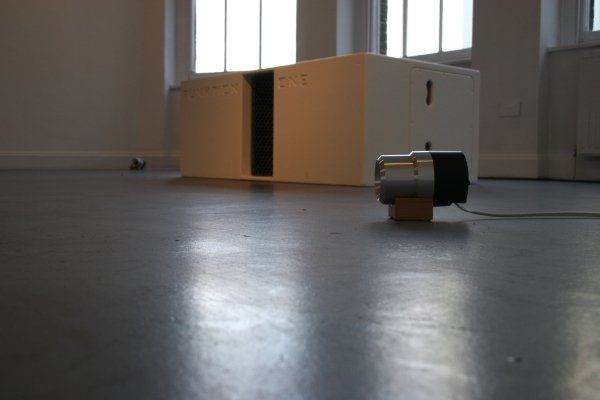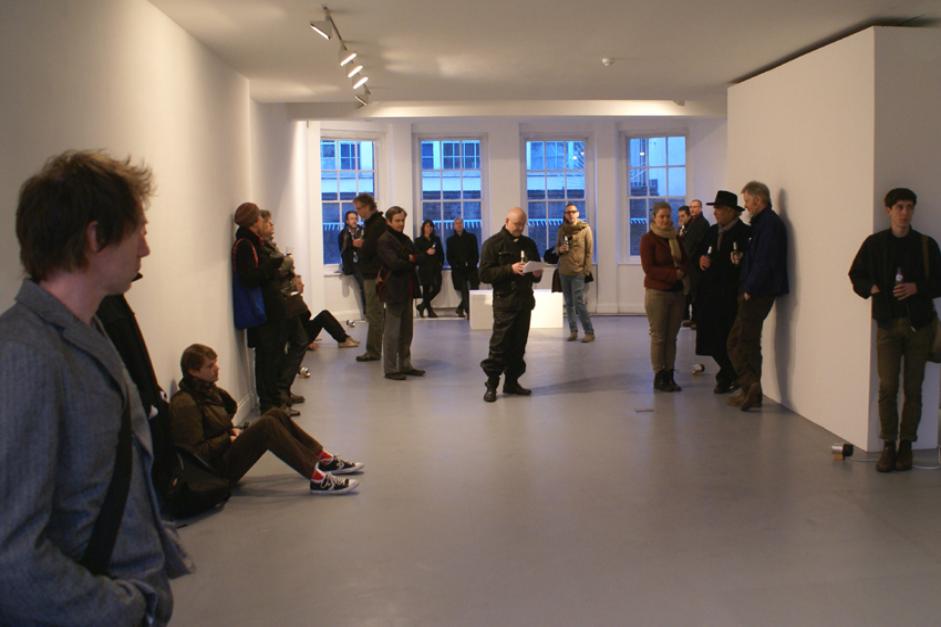JOHN WYNNE
Installation no. 2 for high and low frequencies
curated by Fieldgate Gallery
Reviewed by Daniela Cascella in Frieze Magazine on 01/05/12: frieze.com/shows/review/john-wynne
Private View: Thursday 5 April, 6-9pm
Exhibition Continues: 7 April – 29 April 2012
This is John Wynne’s first solo show in London since his acclaimed installation for 300 speakers, pianola and vacuum cleaner at Beaconsfield Gallery in 2009 (subsequently shown at the Saatchi Gallery). From what Charles Darwent in the Independent described as the ‘frail monumentalism’ of that work to the delicate intimacy of Hearing Loss, which uses only the self-induced feedback from 6 hearing aids left behind when his father died, Wynne’s work invariably draws our attention to the act of listening.
As Brandon LaBelle writes in the Journal of Visual Culture, Wynne’s installation practice ‘captures the inherent promiscuity of sound to cross over between inside and outside environments, ultimately creating a sense of immediacy and also intrusion. Wynne subtly underscores how sound and listening may create points of unexpected contact, sudden awareness, and charmed resonance, to undo the lines between what we imagine as public and private. His [work] delivers a considered noise that puts disparate elements into ambient conversation.’
The new site-specific installation for Angus-Hughes and Fieldgate grows in part from ideas John began working with while doing sound for a theatre production in Toronto: ‘I don’t normally work in theatre, but I was promised enough creative freedom to make it an interesting challenge. I decided that the best way to allow room for the actors’ voices but still make the sound a powerful presence was to occupy the frequencies well above and below those of the human voice. I was also interested in exploiting the phenomenon of ‘beating’, which occurs when tones of slightly different pitch are played at the same time and alternately reinforce and cancel each other out in rhythmic patterns that can be manipulated by changing the relative frequencies, allowing me to manipulate the atmospheric tension in a continuous but almost sub-conscious way.’
These ideas led to Installation no. 1 for high and low frequencies at the Rochelle School Gallery in 2011. This work also built on ideas about the relationships between interior and exterior sound explored in the installation for 300 speakers. Low tones were tuned to the resonant frequencies of the space and both low and high sounds were created in situ to reflect specific attributes (sometimes timbre, sometimes pitch or rhythm) of the existing sound environment – not by imitating or sampling, but by creating sounds that seem to either anticipate or temporally extend the indeterminate ambient soundscape. The effect is to make the walls of the space seem acoustically translucent, drawing the sounds from outside into the space and making them part of the piece to the extent that visitors often can’t tell if sounds are coming from within the gallery or from outside. Working with very low frequencies also offers the opportunity to discover what sounds the building itself can contribute when stirred by long wavelengths that are more felt than heard.






